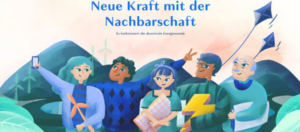Guidelines on community-led heating and cooling
Start your project
Building an inclusive energy community
Ensuring a gender-balanced, diverse, and just approach to the governance of Community-led Heating and Cooling (CH&C) is key to ensure that the transition leaves no one behind, it has furthermore also practical advantages to the operation of a project. Beyond the ethical nature of gender-balance and inclusivity, multiple studies have shown that projects that take gender issues into account are more likely to achieve their objectives, compared to projects that do not. They also improve overall communication, working conditions for both men and women, and achieves better financial results.
Below you will find a short list of inspiring practices that energy communities have put in place across the EU to narrow the gap between vulnerable groups, and to make their energy community more representative. This is followed by some recommendations that your energy community can also put into practice. For a more detailed view, we recommend to visit the SCCALE Inclusivity Guide, or the materials by the European Institute for Gender Equality.
Inclusivity of course goes beyond gender, as your energy community should strive to include people from different socio-economic backgrounds, as well as vulnerable groups, such as people with disabilities and ethnic minorities.

Example
In Greece, Electra Energy Cooperative decided to set their gender-balanced approach in stone, by referencing gender equality as a main mission in their statutes:
“In particular, the Cooperative in the context of promoting sustainable development will carry out activities which: Promote the sustainability of the environment, Contribute to social and economic equality, Promote gender equality and Protect and develop common goods”
Growing at a rate of 1.500 members/year, the energy cooeprative Goiener in Spain has paid special attention to gender balance in their workforce and membership. Out of their 53 employees, 27 are male, and 26 are female (2023). A similar distribution can be seen in their membership base, where 55% of their members are male and 45% are female. In addition to this, Goiener has created a gender plan with the support of the Basque Country. The plan includes “changing the discourse, assessing overall equity and treatment, a communications training programme, mapping and controlling participation during meetings, and setting up meetings taking into account the needs of parents with children”.
Does your energy community have examples of inclusivity that you would like to see in these Digital Guidelines? Send an email to info@energycommunityplatform.eu.
